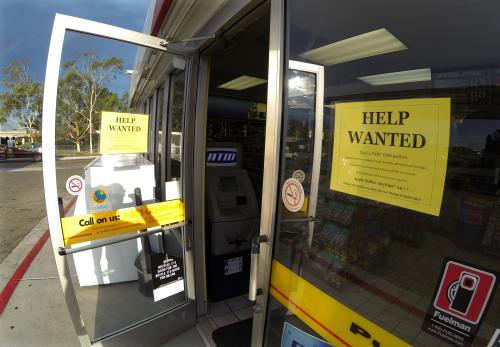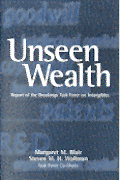There is a lot of disagreement about the economy today. Some analysts focus on signs the recovery is quickening while others see new problems stemming from the end of a bond market bubble. My own view is that of a long-run optimist and I get there by remembering the history of postwar business cycles.
It is widely agreed that the present recovery has been disappointingly slow, in part because of the hangover from past excesses in home-building, banking and consumer borrowing. Initially, policy stimulus offset these headwinds, but when that ended the recovery slowed again.
What is less widely appreciated is that the recoveries from the last three recessions have all started slowly. In the first 8 postwar business cycles, spanning a period of 40 years, employment started rising right after the cyclical trough. Not so in the last three cycles. Employment continued to decline even after output began a gradual rise. It only got back to its trough level after 20 months in this recovery, and only after 27 months and 18 months in the two previous cycles.
One main reason for this is that the economy used to be more inflation prone in the earlier periods and recessions were generally the result of the Fed fighting inflation. As it pursued its dual mandate to maximize employment and fight inflation, the Fed raised interest rates when the economy boomed and lowered them when it slumped. Interest-sensitive demands, which had been suppressed in the tight money period, recovered promptly when the Fed eased again. In the recent cycles, while interest rates still moved countercyclically, they were not the main cause of the recessions.
A second reason is the declining importance of manufacturing, which is inherently more cyclical than many sectors because demands are relatively postponable as well as interest sensitive. In the late 1960s, 32 percent of private sector jobs were in manufacturing industries. By 2006, it was only 12 percent.
The present resembles these recent decades more than earlier ones, and that tells us a lot about economic prospects for economic expansion. What happens from here will depend on how much room there is for further expansion. Because the inflation problems of the early postwar decades are not on the horizon, and because we know the Fed wants to keep it that way, the prospects for expansion will be shaped importantly by how far the economy is from its potential.
In 1992, the unemployment rate averaged 7.5 percent. There followed an 8-year expansion that reduced unemployment to 4.0 percent. In 2003 the unemployment rate averaged 6.0 percent. That expansion ended 4 years later when unemployment averaged 4.6 percent. Neither of these expansions ended because inflation had become a problem. And there is no reason to believe the economy cannot safely operate at such unemployment rates again.
Today, after four years of slow recovery, unemployment is at 7.5 percent, still well above where the 2003 expansion started, and just where unemployment was at the start of the long expansion of the 1990s. We have to hope that Europe’s problems are not too big a drag on the rest of the world, and that policy paralysis does not tighten fiscal policy too much, too soon. But there is nothing on the horizon of normal U.S. economic prospects that indicates we cannot today be starting an expansion like that of the 1990s today.
The Brookings Institution is committed to quality, independence, and impact.
We are supported by a diverse array of funders. In line with our values and policies, each Brookings publication represents the sole views of its author(s).









Commentary
Op-edWhy I’m A Long-Run U.S. Economy Optimist
June 3, 2013